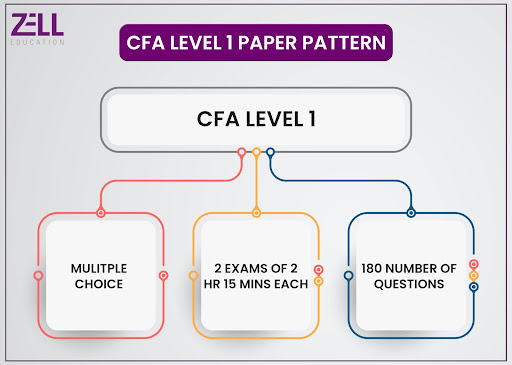The structure of portfolio management has changed. Not because someone rewrote the rules, but because the speed, scale, and diversity of today’s financial instruments have shifted the ground beneath everyone’s feet. Investors are no longer just looking at stocks, bonds, and commodities in isolation. Risk isn’t just about volatility anymore. Decisions aren’t purely made on returns. This is where a well-rounded structure like the CFA course subjects comes in.
The three-part CFA curriculum covers a wide range of topics, from introductions to quantitative analytics and asset allocation models to more advanced topics in finance. Without mimicing any soft of effort, your numerical, model, and methodological thinking is challenged by each successive layer.
Let’s look at what these subjects contain, how they evolve through the levels, and how this content translates into today’s portfolio management roles.
Building the Base: CFA Level 1 Syllabus
Anyone starting out with CFA is handed a deep first look into tools and concepts. CFA Level 1 syllabus covers financial reporting and analysis, ethics, quantitative methods, and economics. While none of these sound like they directly tie into portfolio management, the link is easy to see once you start working with real portfolios.
Financial Reporting and Analysis forces you to treat annual reports not as documents but as data sets full of patterns, anomalies, and signals.When applied to decision-making, ethical principles transform from a manual for doing the right thing into a useful filter. Quantitative Methods introduces statistical tools that drive model-building and scenario analysis. Economics explains the variables influencing interest rates, inflation, and market movement.
This level gives you the vocabulary and grammar of finance. You don’t start managing portfolios from here, but you start understanding the material conditions that drive them. For a clearer picture of how these subjects interconnect early in the course, the CFA Level 1 syllabus breaks them down across topic weights and learning goals in a predictable format that supports both exam prep and later application.
Expanding the Framework: CFA Level 2 and CFA Course Subjects
Once Level 1 grounds the fundamentals, Level 2 becomes more application-heavy. Candidates now deal with valuation, industry analysis, and real financial statements. The CFA course subjects shift their tone from raw memorization, the material transitions into pattern recognition. You start tying together income statements with discounted cash flow models.
These are not academic exercises. They are what analysts do when asked for sector coverage or to pitch a stock for an internal model portfolio. Candidates get used to data that isn’t clean. They figure out when price-to-book ratios mislead and when forward P/E ratios aren’t forward enough. In real-world portfolio management, this kind of second-level thinking is not just useful—it becomes part of the expected baseline.
Ethics continues in Level 2 as well, reinforcing that there are no shortcuts in investment management. Portfolio managers are often not working with their own money. They have mandates, investor expectations, and risk tolerance boundaries. Every subject in Level 2 points toward that tension: maximize performance without crossing lines.
Bringing it All Together: Level 3 and Portfolio Management
CFA Level 3 turns the whole curriculum into a hands-on decision-making platform. The CFA course subjects now fully shift into wealth planning, asset allocation, fixed income strategies, and portfolio construction. The format changes too. Candidates are asked not just to solve but to explain, justify, and write structured answers.
The portfolio management focus here is global. You weigh currency risks. You factor in regulatory conditions across jurisdictions. You build out strategic asset allocations and test them against tactical shifts in inflation or interest rate outlooks. You learn how to integrate derivatives into hedging models, and you study the different risk-adjusted return measures like Sharpe, Treynor, and Information ratios.
You use derivatives in hedging, not as an add-on, but as part of the main structure. Long-term allocation plans aren’t fixed either. They shift when inflation expectations or interest rates move. Sharpe, Treynor, and Information ratios aren’t just names in a list. They come up when comparing two portfolios that carry the same return but different risk.
Additionally, Level 3 places a strong emphasis on behavioral finance, which recognizes that investors may not always behave rationally. This blend of quantitative skill and human interpretation is what defines a successful portfolio manager today.
Relevance to Real Portfolio Management
Modern-day portfolio management doesn’t exist in a vacuum. Portfolios are shaped by liquidity constraints, changing benchmarks, ESG considerations, algorithmic trends, and client biases. The CFA course subjects align with all of this. They don’t teach tricks. They don’t lean on outdated valuation tools. They build decision-making through structure.
The movement from Level 1 to Level 3 mimics the way analysts move up to managers and eventually become CIOs. At each stage, new inputs and expectations are layered on. What was once a calculation turns into a judgement. What was once a model becomes a presentation. What was once theory turns into trade execution with real capital and real reputational consequences.
More firms now ask for CFA-qualified professionals not for the credential itself, but because they know that anyone who has worked through the CFA course subjects has had exposure to this kind of pressure. Not simulated pressure, but case-driven, complex, multi-step decision points that resemble real jobs in asset management, hedge funds, family offices, and advisory roles.
Final Thought
Learning finance on your own is possible, but layering it through a tested structure makes the knowledge stick. That’s what makes the CFA program different from any online content or short-term course. It forces learning over time, spaced repetition, and practical application. Institutions like Zell Education, with structured guidance and curriculum support for the CFA program, make this process clearer and more manageable for working professionals and students alike.

